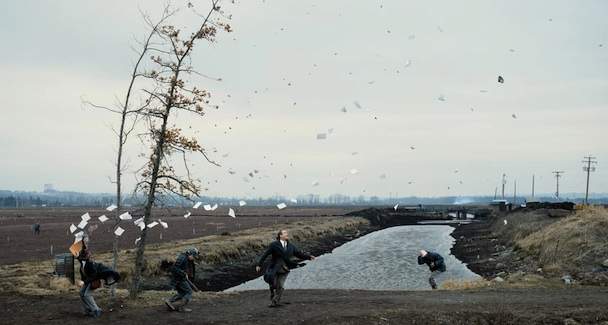Jeff Wall
Lynchian photographs, visual impossibilities and essays in light: that's 30 years of Jeff Wall.
Overview
Jeff Wall has an eye for oddity and a knack for defamiliarising the everyday. This autumn to winter, the MCA continues its run of big-shot internationals with the Canadian photographer’s series of contrived documentaries and essays in light, in a survey spanning thirty years.
The artist describes himself as a cinematographer, and though it sounds like Public Relations Artspeak, the description fits. Celluloid film is not a moving image but a cascade of stills, and just as film realises itself in the split second between frames, the heart of Wall’s work is in what carries on unseen.
The works aren’t what they seem: they’re not photographic prints, but transparencies on lightboxes, and their content comprises highly constructed, oddly normal, domestic scenes. A man pushes against a door in a bricked-up urban space (Doorpusher, 1984), but the second image that we can only imagine is what’s behind the door. Double Self-Portrait (1979) presents a visual impossibility - two of the same man in the same frame. Just outside every frame are endless narrative possibilities, a kind of visual Choose Your Own Adventure where the viewer is made to build a story of the before and after. Many of the works are blown up to true scale. A tree is tree-sized, a human is me-sized, and the effect is that we look into the works rather than at them.
Wall’s immediate debt is to Lynchian cinema, but his local painterly cousin could be Louise Hearman, another master of strange psychology. These are slippery ideas, painted on running water. You can hide things in words, but Walls’ images have an honesty and a purity to them, despite the amorphousness of their content. That’s what makes them so ordinary and extraordinary, so real and unreal.





